|
30 Maggio 2022
Super Saw Oscillators in Roland ZenCore and System-8 and VA Oscillators in ZenCore
The Super Saw oscillators in the System-8 synth and in the software version
available via RolandCloud are implemented with Virtual Analog synthesis; in the family of synths that use the Zen-Core synthesis (Fantom, Fantom0, JunoX, JupiterX / XM, Ax Edge, ..)
and in the virtual Zenology Pro, two multisamples detunable are used through the Super Saw Detune parameter.
Using a spectrum analyzer you can see a band of frequencies with strongly attenuated amplitudes that, when playing higher notes, move towards 20 KHz, before the triggering of the new sample which occurs every 10-12 semitones: it is the typical effect of the
filter used in sample playback technology, which is used to eliminate unwanted harmonics across the "Nyquist frequency" (frequency equal to half the Sample Rate).
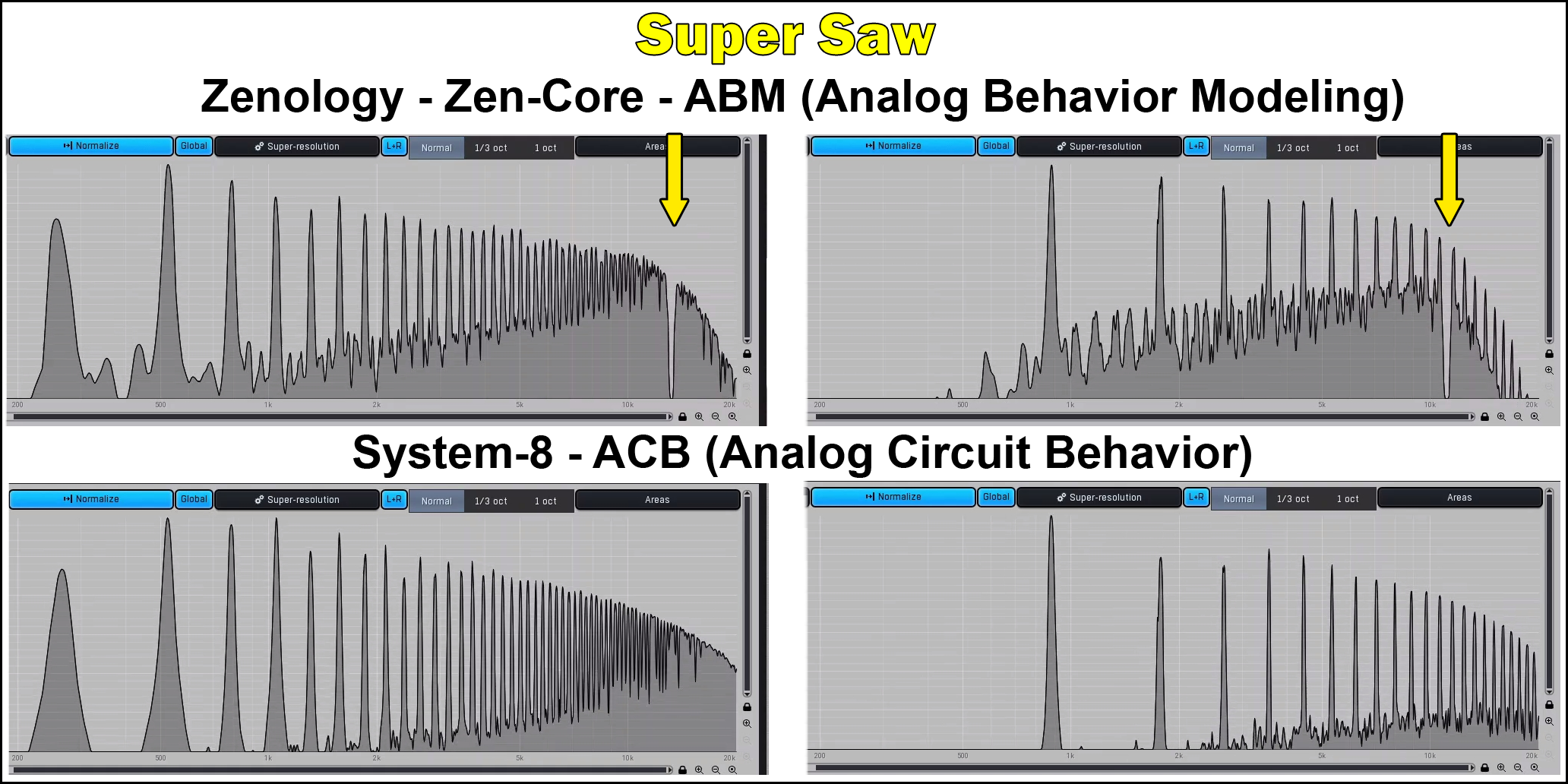
Another very noticeable difference that reveals the technology used (VA for System-8 and Multisample in ZenCore) occurs when playing the lower and higher notes.
In the case of low notes (C0 and G-1 in the example) to save the space occupied by the multisamples which in the low range must have a long duration to hide the effect of the loop,
Roland has used the transposition down for one or more octaves of a sound sampled on higher notes: in this case in the transposition the interpolation algorithm is forced to apply
a low pass filter that attenuates the higher frequencies. Also in this case the difference is quite evident.
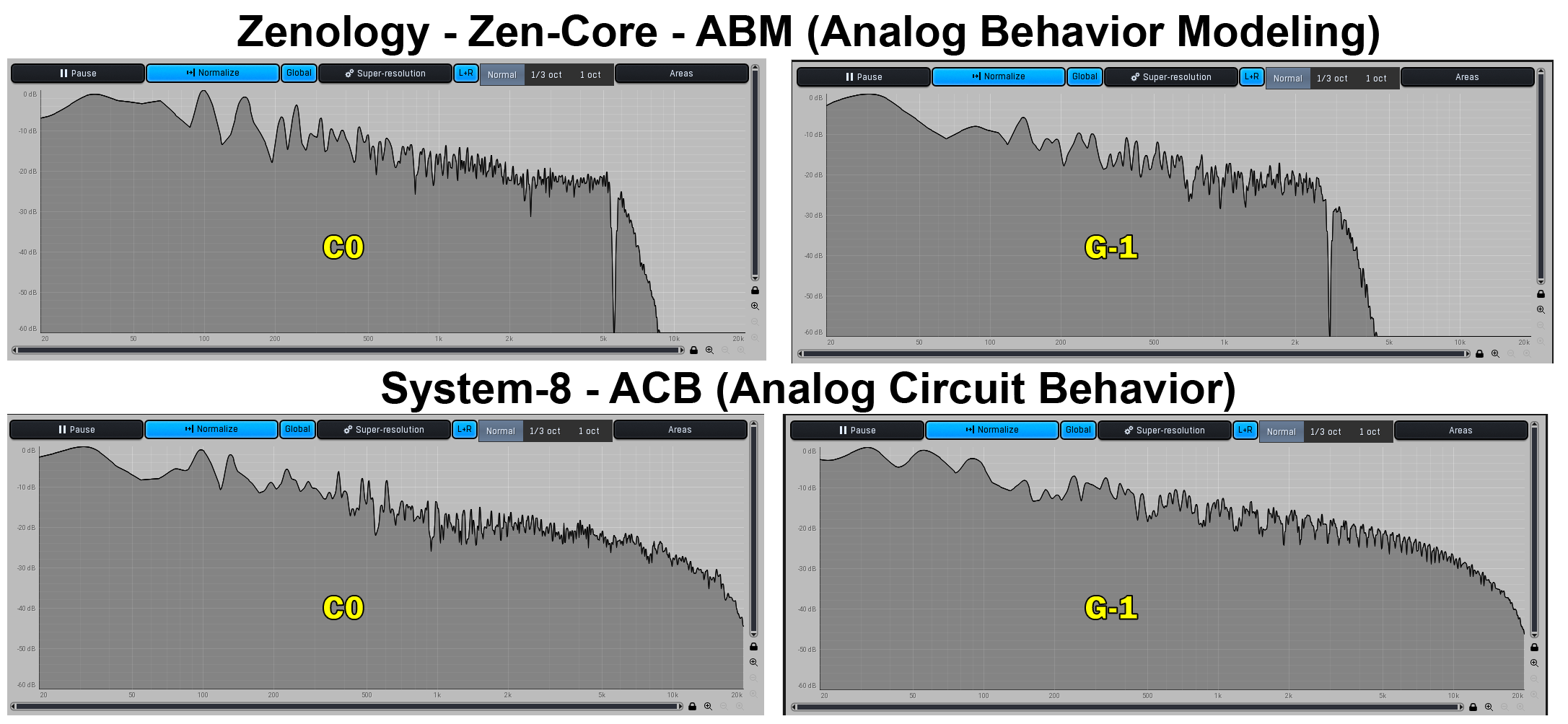
When playing higher notes (G8 in the example), the transpose of a sample suffers from a more evident aliasing than the VA implementation: also in this case the presence of a higher number of spurious harmonics appears evident in the spectral
analysis.
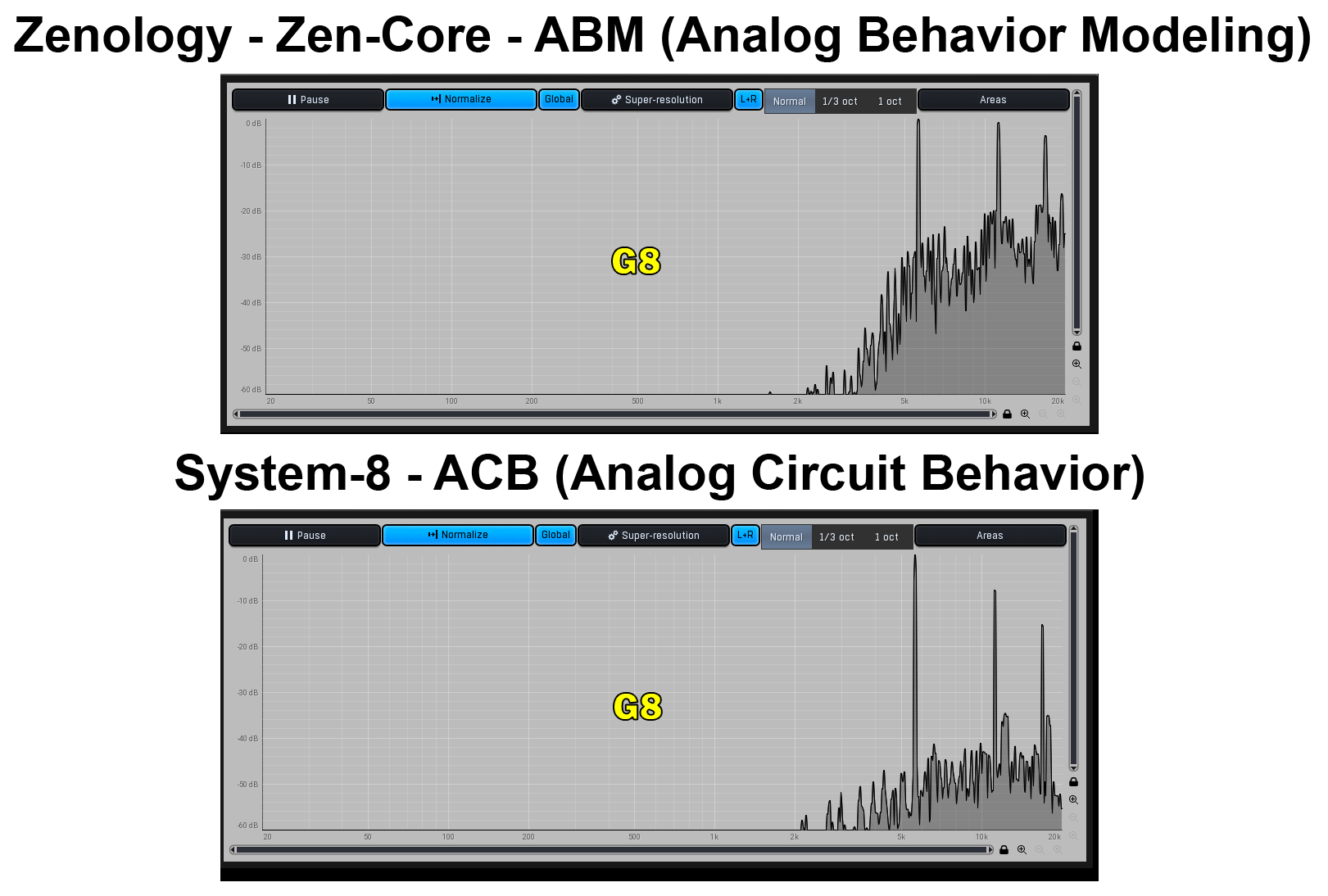
Even if the spectral analysis clearly shows the different synthesis used in the
two implementations and all the known limits due to the use of multisamples, it
must be said that Roland has done an excellent job in Zencore: the differences
are minimal and are mainly concentrated in ranges of notes that are almost never
used.
The advantages of this choice are the well-known ones that characterize the Zen Core synthesis: small compromises on the quality of the synthesis that are compensated for with a high polyphony
and with the inclusion of a very complex synthesis chain that in this case can also operate on the SuperSaw oscillators: synthesis with 4 partials potentially all Super Saw, modulation matrix capable of operating on the detune of the Super Saw, LFO with
16-step sequence. etc, etc.
Obviously, what we have seen applies only to the SuperSaw oscillators: on the contrary, the ZenCore engine (ABM synthesis) does not present any of the limits seen when using the VA
oscillators which are calculated at the highest quality and allow excellent editing possibilities
thanks to the Pulse Width and FAT operating on all 9 available waves: SAW, SQR, TRI (in 3 different implementations), SIN (pure and distorted), RAMP and JUNO.
Pulse Width and FAT can be modulated in real time through the 3 envelopes, 2 LFOs (also in the version with 16-step Wave) and MIDI controls: through the modulation matrix of the ZenCore
synthesis it is possible to exploit these parameters to explore an innumerable series of types of sounds.
As if that were not enough, through X-MOD2 it is also possible to perform linear FM synthesis with each of these waves and the relative PW and FAT parameters.
In addition, in ZenCore there is the possibility of leaving the phase of the VA oscillators locked (Phase Lock parameter) so as to activate them with phase 0 at each Key ON
and optionally invert their phase (180 ° phase shift): Phase Lock
and Phase Inverted applied to VA oscillators with different waves, perhaps slightly detuned, they open the way to many other sonic possibilities.
Here is an example where the Phase Lock parameter is active, a partial uses a square wave and in the second partial there are alternately a sinusoid or a
triangle with inverted phase and double frequency. The waveform obtained is exactly what is expected.
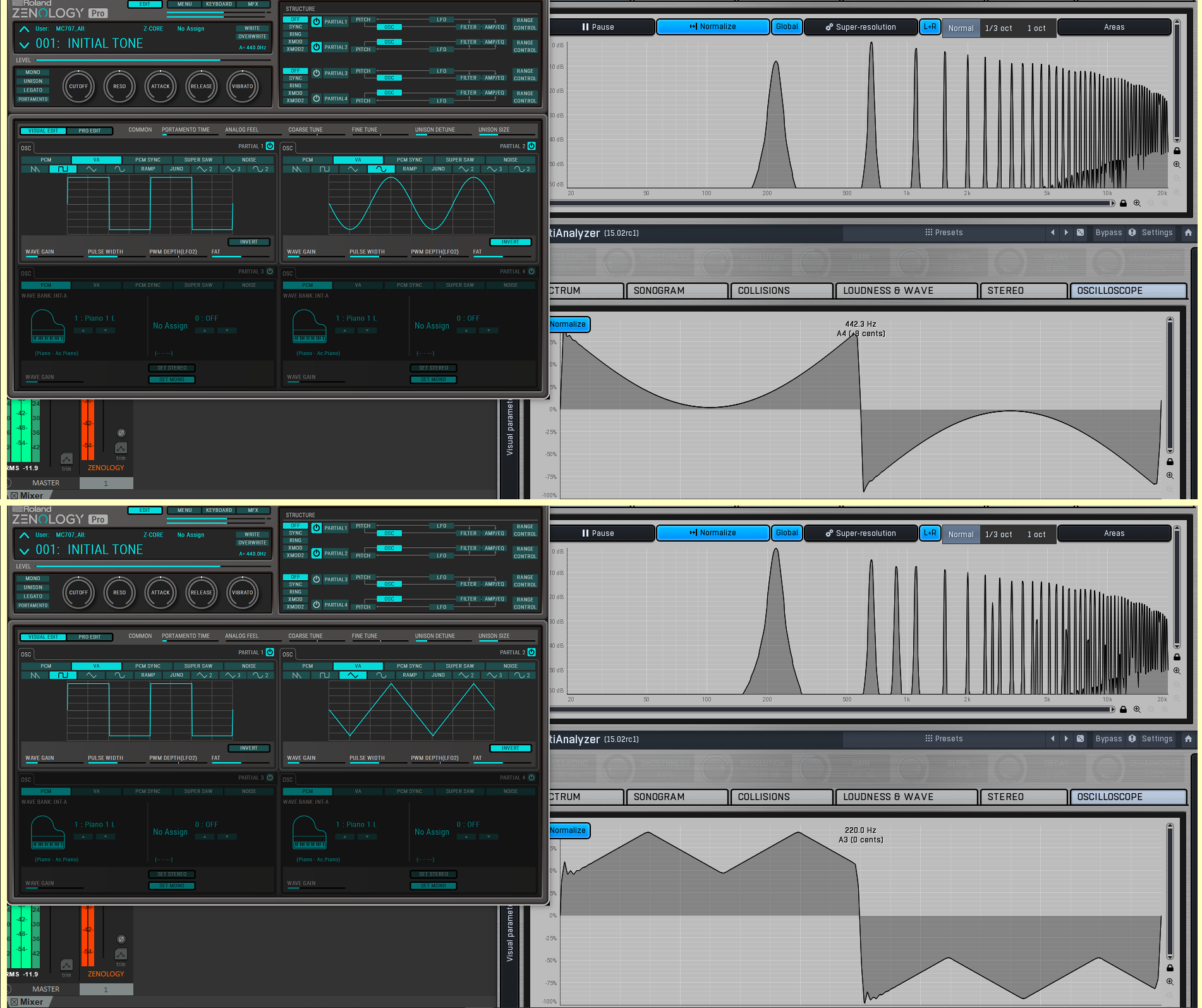
As if that were not enough, in the firmware 3.0 of JupiterX the function that allows you to select the phase of the VA oscillators with 5 ° steps has been
activated (there are 72 possible values, 0-5°, 10°, 15° , ... 360°): with the oscillators locked by means of Phase Lock, this function allows you to create combinations of oscillators
which, added together, activate new and unprecedented possibilities. Hopefully, this parameter will be active in all other ZenCore synths with the new firmware.
A GIF animation follows where the various "pure" VA oscillators are visible: in a couple of frames the Pulse Width and FAT effects on Sin and Juno oscillators appear.
The Pulse Width applied to the sinusoid realizes the well-known phase distortions in Casio PD synthesis (CZ-101, CZ-1000, ...)
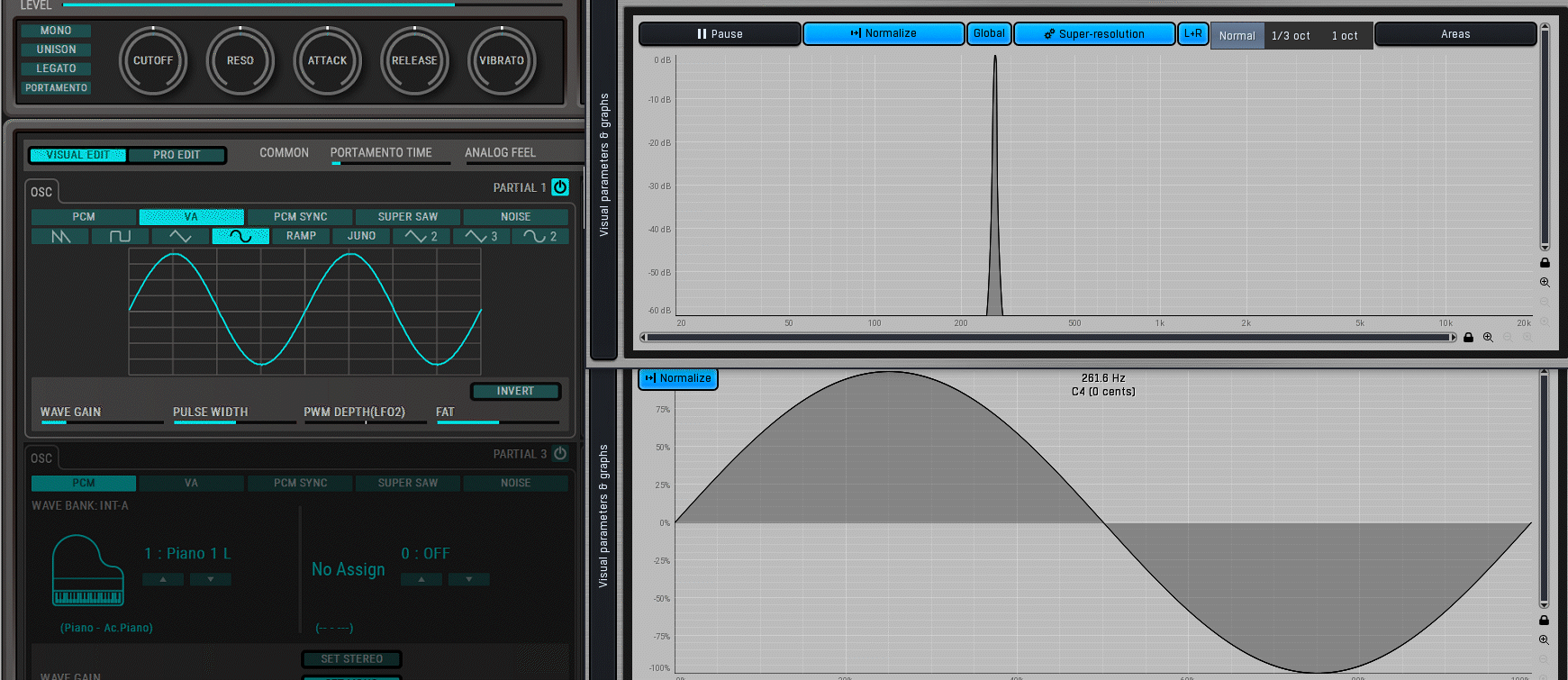

|